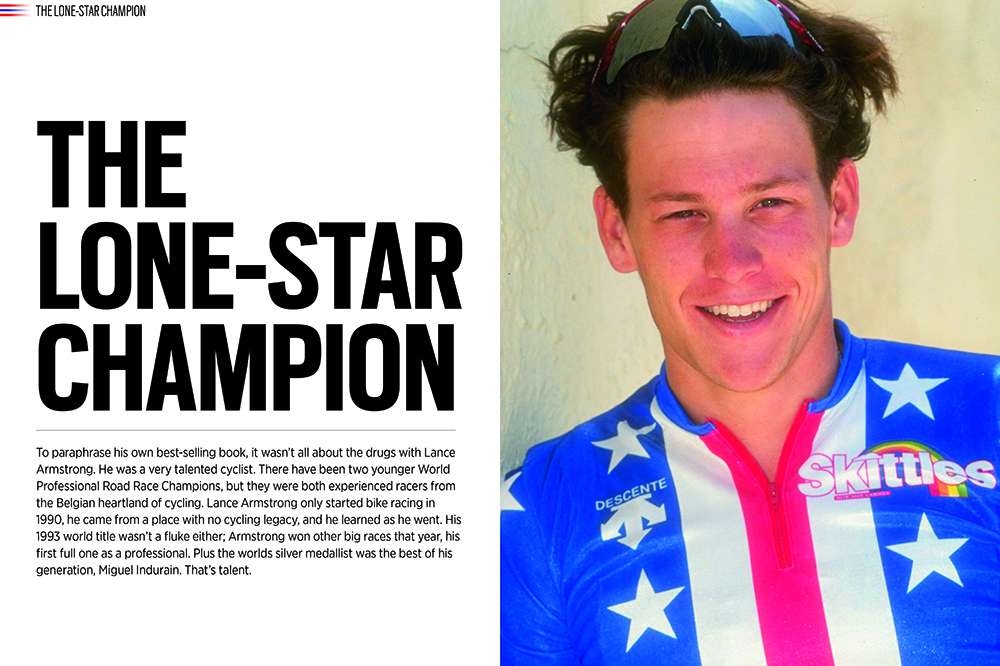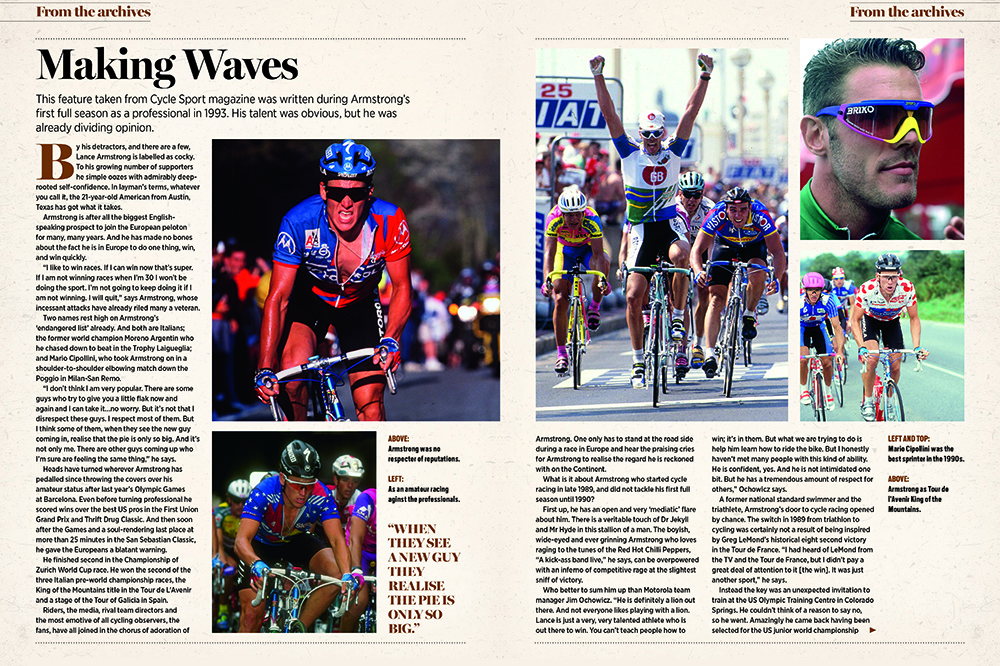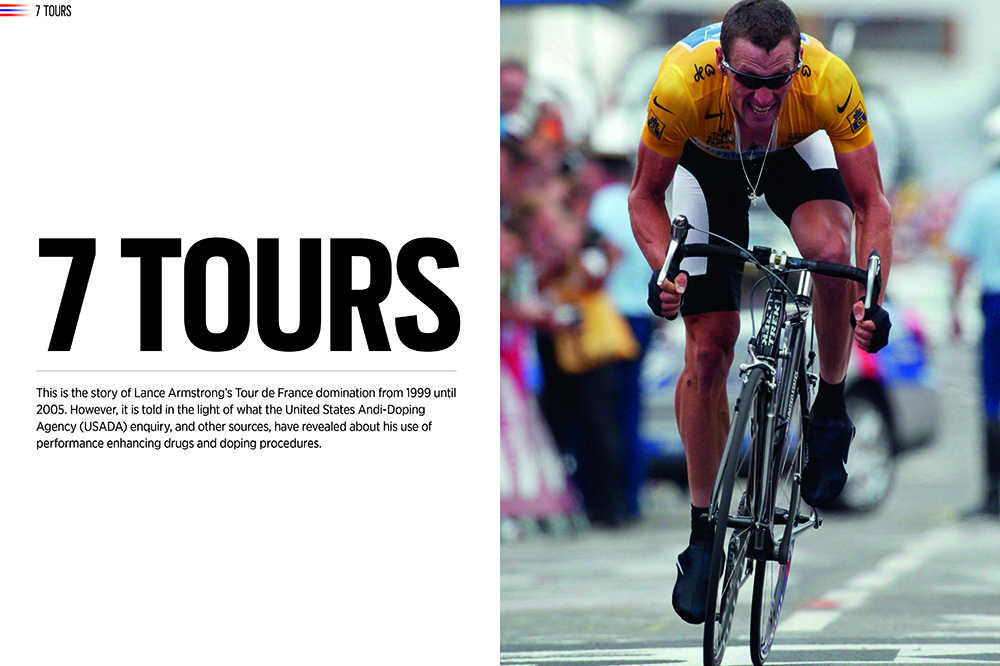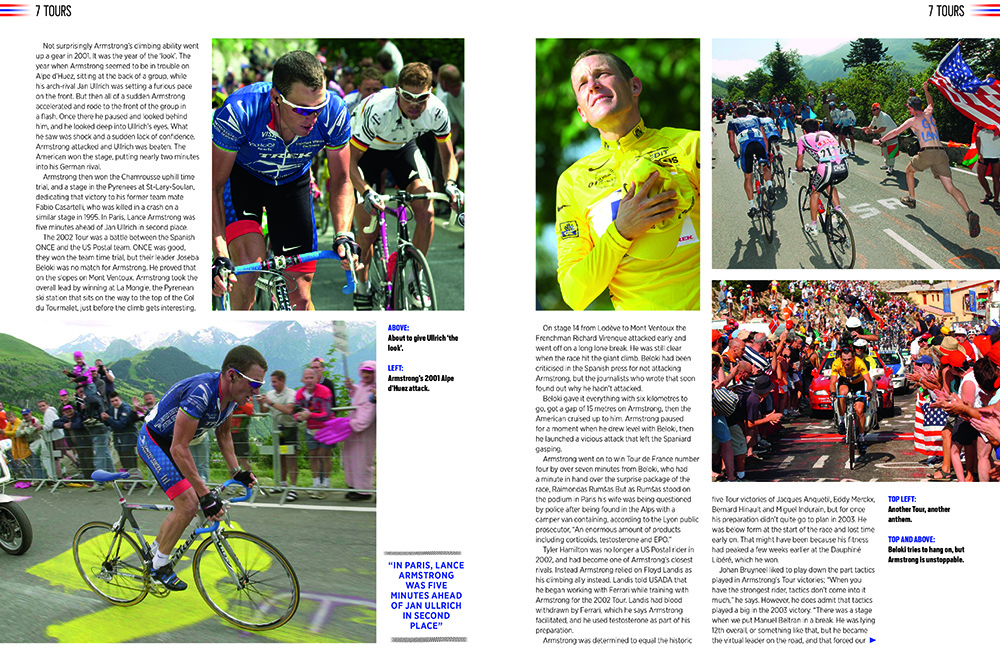Cycling Legends: Lance Armstrong - Order now
Not all legends are good ones. This edition of our Cycling Legends ‘big reads’ series charts the rise and fall of Lance Armstrong. Some will question why we have done it, why not consign Armstrong’s story to the waste bin? The answer is it can’t be, he can’t be air-brushed out of cycling history because he is as much a part of it as any other top racer. He also helped shape it more than most, even though that wasn’t his purpose. That was winning, and winning became his obsession, then his master.

In some ways Lance Armstrong and late 1990s men’s pro road cycling were made for each other. Doping had been a factor for a long time, but the use of doping products and procedures escalated throughout the 1990s, especially among those contending for victory in the Grand Tours. It wasn’t everybody, but there were a good few.

It got to the point that some top teams used in-house doping programmes, run under the supervision of skilful doctors. At least that was, in an odd Machiavellian way, some sort of responsible reaction to what was going on. The right reaction of course would have been for teams to get together and stop, but that was never going to happen, not at that time.

Lance Armstrong won the Tour de France from 1999 until 2005; seven Tours, a record, but they were all taken away from him after investigations into how he won by an American federal agency and by the United States Anti-Doping Agency (USADA).

Not all legends are good ones. This edition of our Cycling Legends series charts the rise and fall of Lance Armstrong. Some will question why we have done it, why not consign Armstrong’s story to the waste bin? It can’t be, he can’t be air-brushed out of cycling history, because he is as much a part of it as any other top racer. He also helped shape it more than most, though that wasn’t his purpose. His purpose was winning, and winning at any cost. Armstrong was the uber-competitor in a sport where that is a highly prized quality.

We look concisely at Armstrong’s early cycling career, and he was a really brilliant racer. We look at his fight with cancer. Then we try to set Lance Armstrong in some context by examining the history of doping in cycling. The story continues by profiling the people Armstrong had around him when he returned to cycling in 1998, through to the end of 2005.
His seven Tour de France victories are considered in the light of USADA’s findings, and other key information. Then we look at Armstrong’s second return to cycling in 2009 and 2010; at his reasons why, and at his fall from grace. Finally, we ask the question, is top-level men’s professional cycling cleaner now than it was when Armstrong raced?
Priced £9.99.
The latest race content, interviews, features, reviews and expert buying guides, direct to your inbox!
Order now with FREE P&P or at all good newsagents.
Others in the Cycling Legends Series:
Sean Kelly and Stephen Roche
Eddy Merckx
Cycling’s Iconic Places